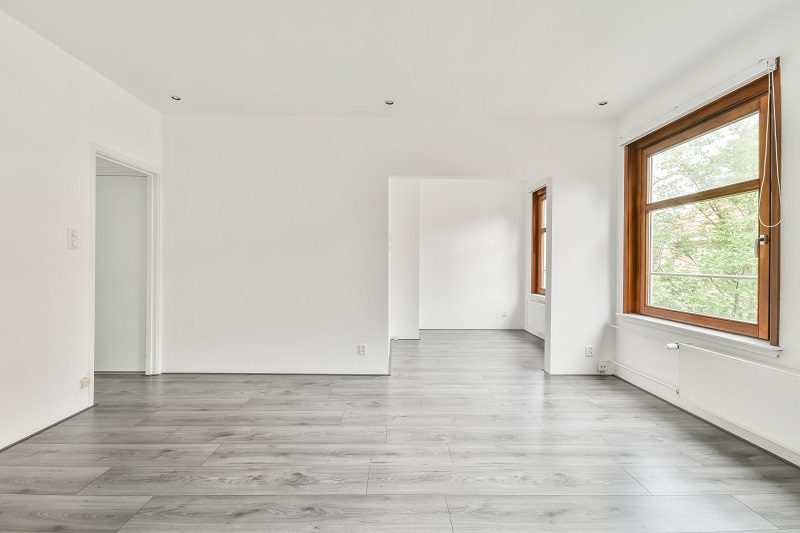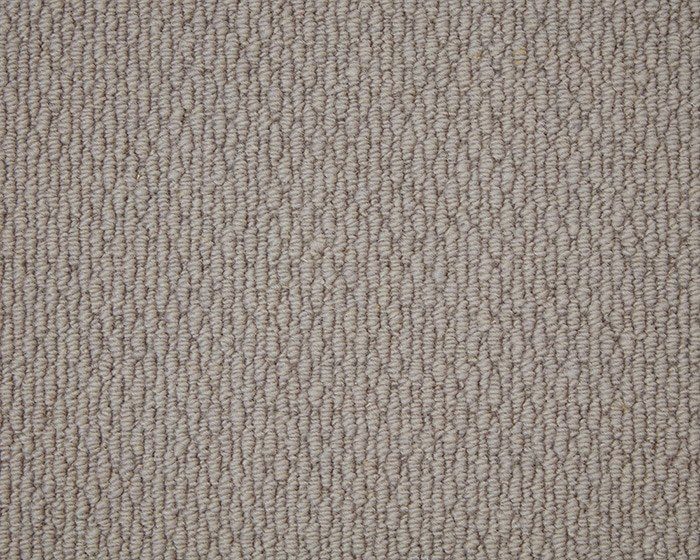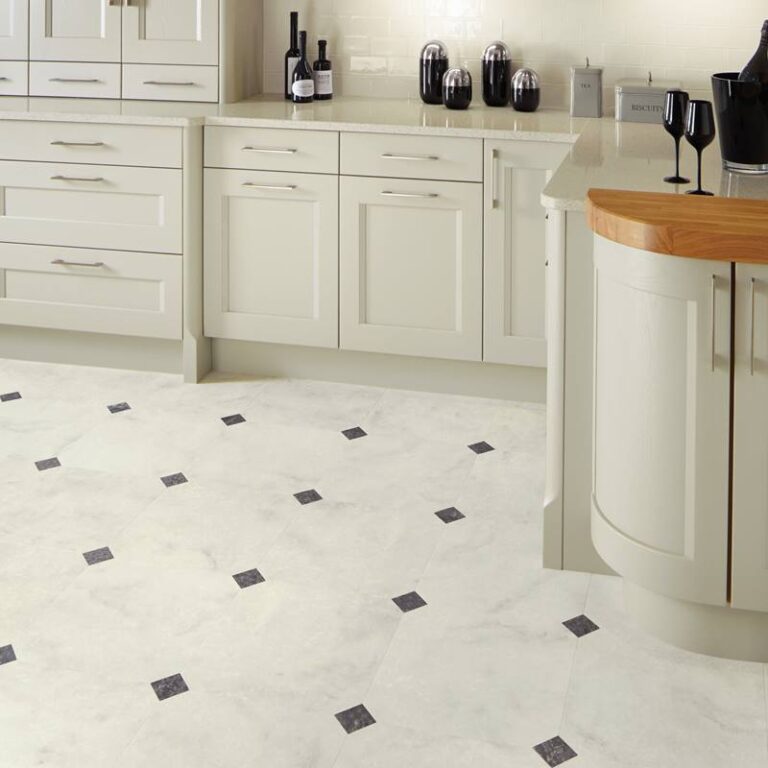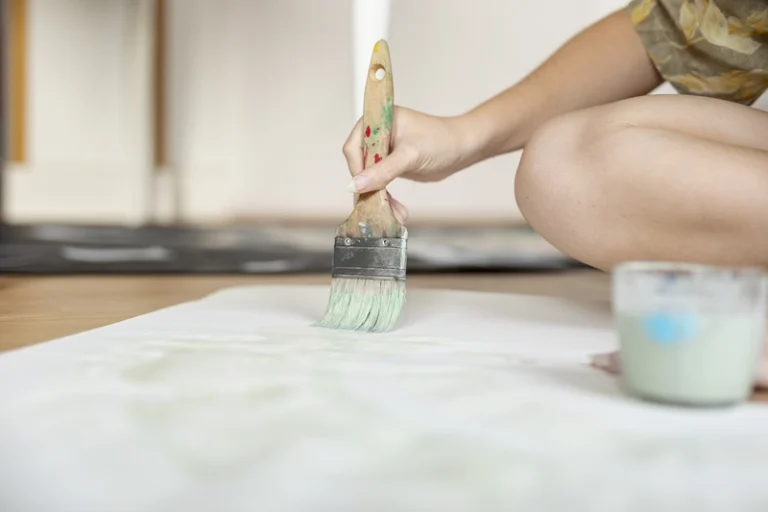If you’re considering tile flooring for your home, you might be wondering about the different types available and how to find the most affordable tile flooring option. From ceramic and porcelain to natural stone and vinyl, there are plenty of choices to consider.
In this article, we’ll explore the various types of tile flooring, the factors that affect the cost, and how to save money on your tile flooring project. Whether you’re on a budget or simply looking for the best value, we’ve got you covered.
Key Takeaways:
The most affordable types of tile flooring are vinyl, ceramic, and linoleum. Factors that affect the cost of tile flooring include material, size and shape, installation method, and additional features. To save money on tile flooring, shop around, consider DIY installation, look for sales and promotions, choose a simple design, and buy in bulk.
What is Tile Flooring?
Tile flooring refers to a durable and versatile option for covering floors. It offers various materials such as ceramic, vinyl, and more to suit different interior design preferences and functional needs.
Characterised by its resilience and low maintenance, tile flooring stands out for its ability to withstand heavy foot traffic, resist moisture, and endure wear and tear over time. Its durability makes it suitable for high-traffic areas such as kitchens, bathrooms, and entryways. Additionally, its versatility allows for a broad spectrum of design options, from traditional to contemporary.
The materials available cater to a range of preferences. Ceramic tiles offer a timeless appeal with diverse colours and patterns, while vinyl provides a cost-effective, water-resistant alternative. Luxury Vinyl Tiles usually have innovative designs that mimic natural materials and offer easy installation and maintenance.
Different Types of Tile Flooring
In terms of tile flooring, there are several distinct types to choose from. These include ceramic tile, porcelain tile, natural stone tile, vinyl tile, and linoleum tile. Each of these options offers unique characteristics and aesthetic appeal.
a. Ceramic Tile
Ceramic tile is a popular choice for tiled flooring, known for its durability and versatility. It can be glazed and kiln-fired to create an extensive range of designs, patterns, and colours.
Its strength and resistance to wear and tear make it an ideal option for high-traffic areas such as kitchens and bathrooms.
The finishing processes, whether glossy, matte, or textured, not only enhance its visual appeal but also add to its protective layer. This makes it more resistant to stains and scratches.
Ceramic tiles offer an abundant palette of options, allowing homeowners to personalise their spaces with intricate mosaics, bold geometric patterns, or subtle, natural tones. This complements any style or aesthetic preference.
b. Porcelain Tile
Porcelain tile is a compact and water-resistant option for tile flooring. It is prized for its exceptional durability, making it suitable for high-traffic areas and both indoor and outdoor applications with minimal maintenance requirements.
The compact composition of porcelain tile lends it a high level of strength and resistance to wear and tear, ensuring its longevity in various settings.
Its water-resistant nature makes it an ideal choice for areas prone to moisture, such as bathrooms, kitchens, and outdoor patios, where traditional ceramic tiles may not be as suitable.
c. Natural Stone Tile
Natural stone tile offers an elegant and natural flooring option, available in varieties such as marble, terrazzo, limestone, travertine, and granite. Each showcases unique variations and requires proper sealing for maintenance.
Marble, known for its luxurious appeal, features stunning veining patterns and a polished finish that adds sophistication to any space.
Terrazzo boasts a timeless charm with its speckled appearance and customisable designs.
Limestone’s earthy tones and natural textures bring a warm, inviting ambience to interiors.
Travertine exudes a rustic elegance, characterized by its porous surface and earthy colors.
Granite stands out with its durability and resistance to heat and scratches, making it a practical choice for high-traffic areas.
d. Vinyl Tile
Vinyl tile stands out as an easy-to-install and cheap flooring option. It offers moisture resistance and is compatible with underfloor heating. Plus, it comes in a wide array of designs, patterns, and colours.
Its affordability makes it an attractive choice for homeowners on a budget. And the convenience of its installation process makes it popular among DIY enthusiasts, saving on installation costs.
Moreover, vinyl tile offers exceptional design versatility. It allows homeowners to achieve the look of natural materials, like wood or stone, at a fraction of the cost.
e. Linoleum Tile
Linoleum tile offers an eco-friendly and renewable tile flooring option, known for its antibacterial properties, resilience, and availability in vibrant colours, designs, and patterns.
Linoleum tile is the go-to choice for environmentally conscious homeowners. Its natural composition includes linseed oil, wood flour, pine rosin, and environmentally friendly pigments, making it biodegradable and recyclable. This not only benefits the planet but also makes it a sustainable flooring option.
Aside from its eco-friendly qualities, linoleum tile is also remarkably resilient. It has a natural ability to bounce back from indentation, making it a durable and long-lasting flooring choice.
Additionally, the wide range of vibrant colours and patterns available ensures that there is a linoleum tile design to suit every style and preference.
Factors Affecting the Cost of Tile Flooring
The cost of tile flooring can be influenced by several factors, including the material chosen, the size and shape of the tiles, the installation method, and any additional features or customisation options.
In terms of material choices, ceramic, porcelain, marble, and glass tiles all come with different price points and maintenance needs.
The size and shape of the tiles affect both the material cost per square foot and the complexity of the installation.
Larger tiles may require more precise cuts and levelling during installation, impacting labour costs.
The installation method, such as mortar versus thin-set, and the need for additional features like radiant heating or decorative patterns can also significantly impact the total expenditure.
a. Material
The choice of material significantly influences the cost of tile flooring. Options such as ceramic, vinyl, marble, terrazzo, natural stone tiles, terracotta tiles, porcelain tile, wood floors, and concrete each present different pricing ranges and maintenance requirements.
For example, ceramic and vinyl tiles are among the most budget-friendly options, making them popular choices for cost-conscious buyers. On the other hand, marble and natural stone tiles tend to be more expensive due to their luxurious appeal and the complexity of their installation.
In terms of maintenance, ceramic tiles are relatively easy to clean. However, natural stone and marble may require specialised cleaning products and regular sealing to maintain their lustre.
The durability and longevity of tile flooring materials should also be considered in relation to their cost. While ceramic tiles are known for their resilience, wood floors may require more frequent refinishing, contributing to long-term maintenance expenses.
b. Size and Shape
The size and shape of the tiles chosen for flooring can impact the overall cost, as larger custom shapes, intricate patterns, and mosaic designs may require more intricate installation and potentially higher material expenses.
When considering the cost implications of different tile sizes and shapes, it’s essential to factor in the dimensions of the space being tiled.
Large format tiles, which typically have dimensions greater than 15 inches, can reduce installation time and labour costs due to fewer grout joints. The material costs might be higher per tile, potentially offsetting any savings from reduced labour.
On the other hand, small format tiles, such as mosaics or hexagons, can be more cost-effective in terms of materials, but their installation might be more labour-intensive, impacting overall expenses.
Custom designs and intricate patterns can add a premium to both material and installation costs, so it’s crucial to weigh the aesthetic value against budget constraints.
In the overall context of cost-effectiveness, analysing the relationship between tile size, shape, material expenses, and installation complexity is paramount for making informed flooring decisions.
c. Installation Method
The chosen installation method for tile flooring, whether through professional installation or DIY approaches, can influence the overall cost, considering factors such as adhesive, grout, and underlay requirements.
DIY approaches may seem cost-effective initially, but individuals should consider the cost of tools, equipment, and any potential mistakes that may occur during the installation process. It’s important to weigh the upfront costs of professional installation against the time and effort invested in a DIY approach, as well as consider the long-term durability and quality of the installation.
On the other hand, professional installation typically involves the cost of labour, which can vary depending on the complexity of the project and the area being tiled. Professional installers often have access to bulk pricing for materials, potentially reducing overall material costs.
If you wish to utilise professional installation services, you can avail yourself of our Fitting Services. TEKA Flooring has a good quality of work. If you are not satisfied with the fitting service, we also provide a quality check visit to ensure that any issues caused by us are fixed, giving you complete peace of mind.
d. Additional Features
Incorporating additional features such as underfloor heating, customised designs, specific patterns, unique sealants, grout colours, and textured finishes can contribute to the overall cost of tile flooring installations.
When considering underfloor heating, it adds a significant expense as it involves laying down a network of heating coils or pipes beneath the tile.
For customised designs, intricate patterns, and unique sealants, these specialised options also accompany a higher price tag due to the customisation process and specialised materials. Opting for grout colours other than standard shades can result in added costs.
Textured finishes, like embossed or distressed designs, often require more labour and materials, which will impact the total cost of the tile flooring project.
How to Save Money on Tile Flooring
Saving money on tile flooring can be achieved through strategies such as shopping around, comparing prices, considering DIY installation, leveraging sales and promotions, opting for simple designs, and buying in bulk to maximise cost-effectiveness.
In terms of shopping around, it’s important to visit various shops, both physical and online, to get a sense of the price range and available options.
Comparing prices is crucial to ensure that you’re getting the best deal possible. For those who are handy with tools and willing to put in the work, DIY installation can significantly reduce labour costs.
Keeping an eye on sales and promotions from different retailers can also lead to substantial savings. Opting for simple designs can often be more budget-friendly, and buying in bulk can be a strategic move to negotiate better prices from suppliers.
a. Look around and compare prices
One effective way to save money on tile flooring is to explore multiple retailers, both online and local, to compare prices and identify potential discounts and deals that align with budgetary considerations.
By taking the time to research and compare prices, individuals can ensure that the tile flooring they purchase is not only of high quality but also offers the best value for their money.
Visiting different retailers or browsing through various online platforms allows customers to discover unique designs and styles, enhancing the overall options available and ensuring that they find the perfect fit for their specific preferences and requirements.
Being thorough in the comparison process can also lead to discovering special promotions, such as seasonal sales or bundle discounts, providing even more opportunities to save on the tile flooring purchase.
b. Consider DIY Installation
Opting for DIY installation of tile flooring can be a cost-effective approach, with access to tutorials, guidance, and necessary tools and equipment contributing to potential savings on installation expenses.
By choosing to install the tiles yourself, you can save money by not having to hire professionals for the job.
There are numerous online tutorials and guides available that can provide helpful tips and step-by-step instructions for the DIY tile flooring installation. The required tools and equipment for the installation are often readily accessible at local hardware stores, making it convenient to gather everything needed for the project.
c. Look for Sales and Promotions
Keeping an eye out for sales and promotions in the tile flooring market can lead to potential savings. Discounts, clearance offers, seasonal promotions, and limited-time deals can offer opportunities to acquire quality flooring at lower costs.
One important aspect of monitoring sales and promotions is the chance to capitalise on discount opportunities. These can range from straightforward price reductions to bundled offers or special package deals.
Additionally, seasonal offers often provide unique opportunities to access exclusive designs or patterns at reduced rates. This makes it an ideal time to revamp living spaces.
d. Choose a Simple Design
Opting for a simple design in tile flooring, characterised by minimalist patterns and colours, can be a cost-effective choice without compromising the overall aesthetics of the space.
Simple designs in tile flooring possess a timeless elegance that effortlessly blends with various interior styles.
The restrained use of patterns and colours imparts a sense of visual unity, creating an uncluttered and harmonious ambience.
The practicality and ease of maintenance associated with minimalist designs make them an ideal choice for budget-conscious homeowners.
They eliminate the need for frequent replacements or costly refurbishments.
e. Buy-in-Bulk
The next tip to attain cheap flooring tiles is purchasing tile flooring materials in bulk or through wholesale channels can lead to potential cost savings, as quantity discounts and stock clearance offers can align with project planning and budget considerations.
Planners and homeowners embarking on a renovation or construction project often seek ways to optimise their budget without compromising quality. Buying tile flooring in bulk can offer significant advantages in this aspect.
The potential savings from quantity discounts and wholesale opportunities not only contribute to the financial efficiency of the project but also ensure that there are sufficient materials available for the entire scope of work. Taking advantage of stock clearance offers can add another layer of cost-effectiveness to the planning process.
This approach provides an opportunity to access high-quality tile flooring at reduced prices, thereby strengthening the feasibility of the project within prescribed budgetary constraints.
Most Affordable Types of Tile Flooring
For those seeking the most affordable tile flooring options ceramic tile, linoleum tile and vinyl tile stand out as cost-effective choices that offer durability, visual appeal, and ease of maintenance.
a. Ceramic Tile
Ceramic tile stands as an affordable and durable choice for tile flooring, known for its glazed and kiln-fired versatility that includes a wide array of designs, patterns, and colours to accentuate interior spaces.
The cost-effectiveness of ceramic tile flooring is highlighted by its resilience to wear and tear, making it a long-term investment for any property. This flooring option is not only hard-wearing but also easy to maintain, requiring minimal upkeep compared to other materials.
It’s an excellent choice for high-traffic areas, as it can withstand heavy foot traffic without losing its visual appeal. The finishing options for ceramic tile span from matt to glossy, offering versatile design possibilities to suit any aesthetic preference or decor style.
b. Linoleum Tile
Linoleum tile offers an affordable and eco-friendly option for tile flooring, showcasing vibrant colours, diverse designs, and patterns, while being renewable and resilient for long-term use.
Linoleum tile is an environmentally-friendly flooring option, made from natural materials like linseed oil, cork dust, and wood flour. This makes it a sustainable choice for eco-conscious consumers.
Plus its environmental appeal, linoleum tile is also highly durable and requires low maintenance. This makes it a practical option for high-traffic areas, reducing the need for frequent replacements and minimising environmental impact.
But the benefits of linoleum tile don’t stop there. Its visual appeal is also noteworthy, with vibrant colours and patterns to choose from. It can even mimic the look of hardwood, stone, and ceramic, making it a versatile choice for various interior design styles.
And if all that wasn’t enough, linoleum tile is also cost-effective and easy to install, making it a practical and environmentally friendly flooring solution for any space.
c. Vinyl Tile
Vinyl tile emerges as one of the most affordable options for tile flooring, offering easy maintenance, moisture resistance, durability, and an extensive range of designs, patterns, and colours to suit various preferences.
Many homeowners and property owners are pleasantly surprised by the cost-effectiveness of vinyl tiles, especially when compared to other flooring options. Its resistance to moisture makes it a popular choice for kitchens and bathrooms, where spills and humidity are common concerns.
Its durability ensures that it can withstand heavy foot traffic and daily wear and tear, making it a practical and long-lasting flooring solution. Plus its functional benefits, vinyl tile also stands out for its design versatility. This flexibility allows individuals to achieve their desired aesthetic without compromising on quality or breaking the bank.
If you’re considering vinyl tiles for your home flooring, you can choose from various luxury vinyl tile products from TEKA Flooring. Whether you prefer the look of hardwood, stone, or unique patterns, there are numerous options in TEKA Flooring that are available to complement any interior style. Let’s contact us, now!
Read also: 6 Vinyl Flooring Ideas For Small Bathrooms














